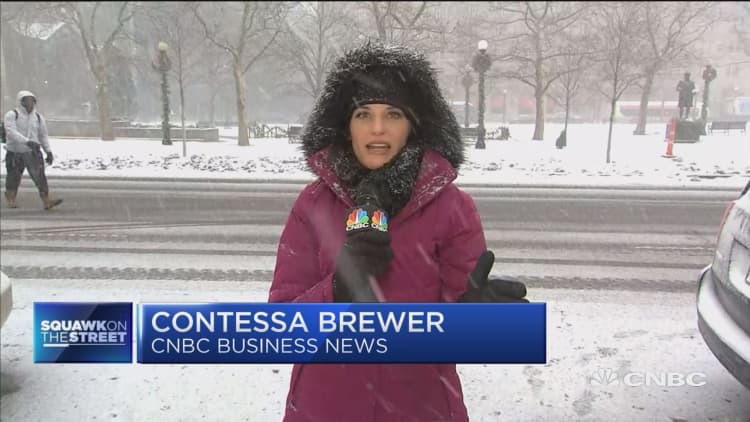Utilities have been girding for the "bomb cyclone" that's sweeping through the eastern United States, but analysts say Americans shouldn't expect the same impacts that strained the power grid and drove up prices during the 2014 "polar vortex."
Power outages have already hit thousands of customers in Florida and the Southeast because of the massive storm. National Fuel warned that it expects outages in New England that could take multiple days to restore.
Most weather-related outages happen because of problems with the transmission and distribution system, the lines that carry electric power from generating plants to homes and businesses. Severe winds, freezing cold, accumulation and downed trees can wreak havoc on this system.
New England is definitely where you have the potential to see problems, particularly over the next few days.Ryan HardyPA Consulting
However, extreme cold also can cause problems at power plants. While it's far rarer than downed lines, this was a major issue during the period of extreme cold called the polar vortex that struck the United States in January 2014.
Then, temperatures that were 20 degrees to 40 degrees below normal in many parts of the United States created a host of problems for the plants that generate power throughout the country. At the same time, regional power grids and markets saw record or near-record power demand during the event.
In the South, outages hit plants that weren't designed to operate at freezing temperatures, a report by the North American Electric Reliability Council concluded. Meanwhile, outages at coal-fired facilities and problems delivering natural gas to plants in the 13-state region that includes Pennsylvania and New Jersey pushed the system there to the brink.
Analysts don't expect those issues to arise again with this week's storm, but natural gas pipeline constraints in the Northeast create challenges for the grid operator and will potentially raise costs for ratepayers.
Northeast's natural gas problem
Natural gas now accounts for about one-third of U.S. power generation, roughly on par with coal. However, there is significant opposition to new pipeline construction in the densely populated Northeast, which sits just above the major natural gas-producing region in Pennsylvania, Ohio and West Virginia.
This becomes an issue during cold snaps, when residences that rely on natural gas for home heating compete for supplies with power plants.

"That's a unique thing that puts stress on the pipeline infrastructure in the Northeast," said Ryan Hardy, an energy markets advisor at PA Consulting Group.
"New England is definitely where you have the potential to see problems, particularly over the next few days."
While natural gas accounted for about half of New England's electric power on an annual basis in 2016, it is currently generating about a quarter, according to New England ISO, the organization that operates the region's grid and power market.
To address pipeline constraints and high demand, New England is turning to plants that burn oil, a relatively outdated method of producing power in the United States. About 1 percent of New England's electric power came from oil-fired generation in 2016. But in recent days, oil-fired generation has accounted for about 30 percent of the energy mix.
Coal-fired generation has provided about 6 percent of New England's power during the cold snap, compared with about 2 percent in 2016.
The pipeline constraints have also led to a spike in regional natural gas prices for immediate delivery.

Cash prices in New York have spiked above $17 per million British thermal unit — compared with U.S. benchmark prices around $3 per mmBtu — Hardy noted. That increase feeds into the cost of power and will ultimately hit ratepayers, he said.
Cash prices in the Marcellus shale and Appalachia, the epicenter of U.S. natural gas production, have recently traded below $2 per mmBtu, according to Jacob Meisel, co-founder and chief analyst at Bespoke Weather Services. In recent days, they've spiked to $5 to $6 per mmBtu, he said.
Still, those increases aren't as drastic as during the polar vortex, and there may be relief in sight, Meisel said. There are signs that the weather pattern warms in the second half of January and cold is unlikely to dominate in the weeks after that.


